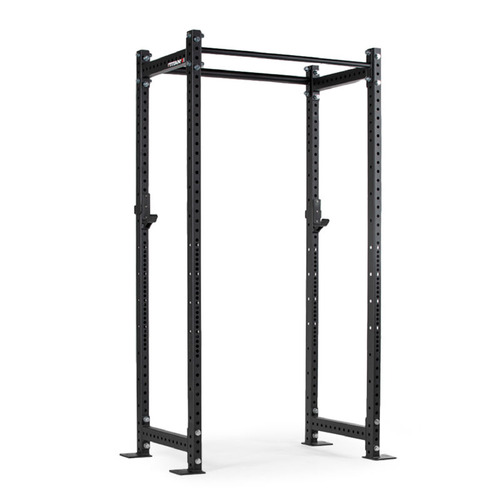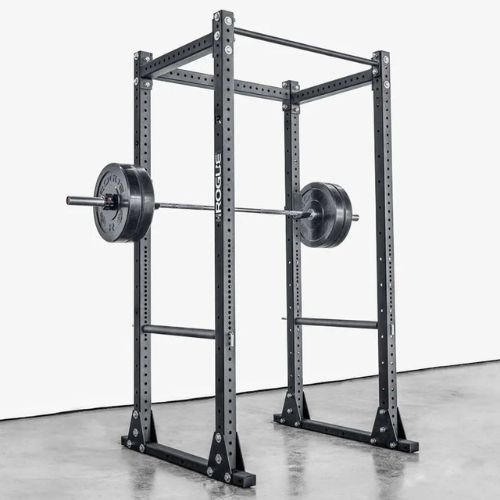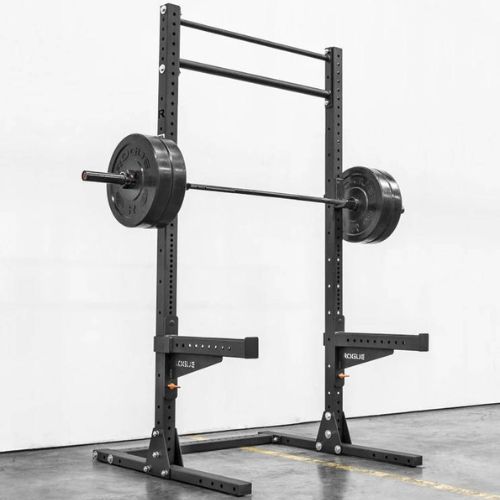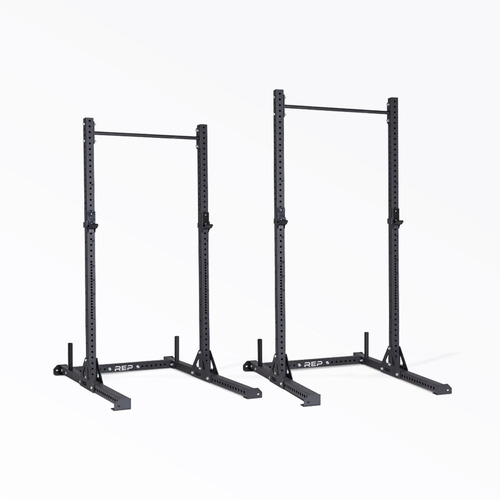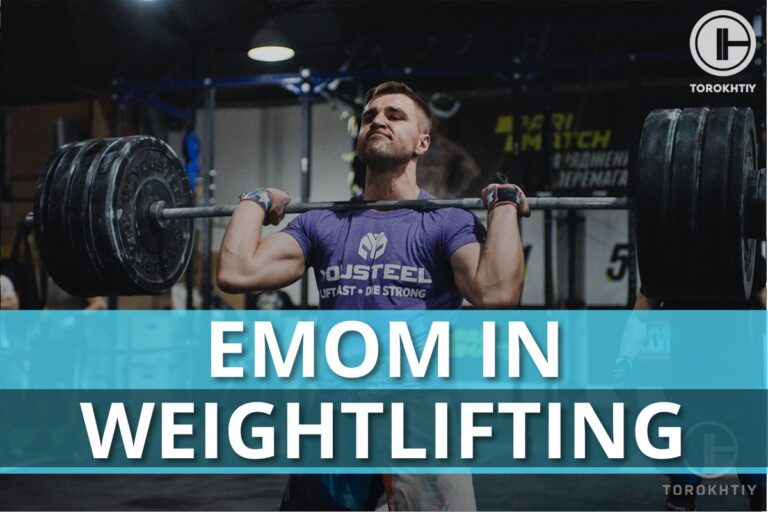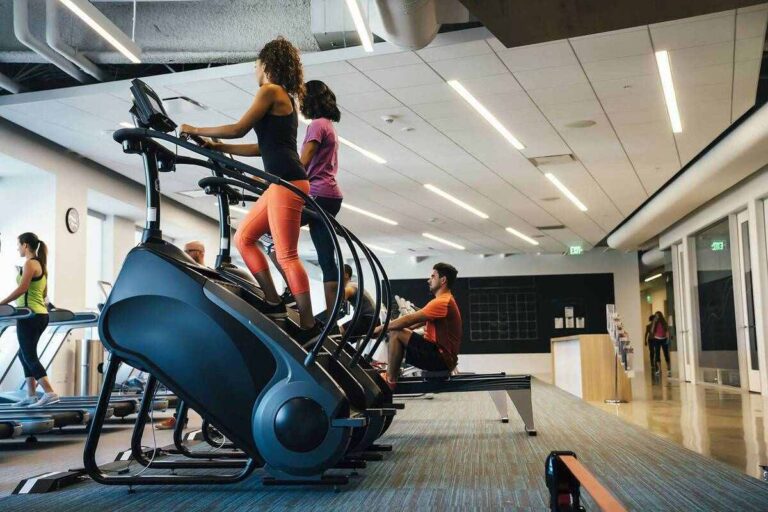Power Rack vs Squat Rack – Which One Should You Get?
Power rack vs squat rack – which one should you get for your home gym? One of the most frequently asked questions when it comes to home gyms is what kind of rack to get. That’s why in this article, we will be talking all about what power racks and squat racks are, who they’re suitable for and how to pick which one to get.
So without keeping you waiting any longer, let’s get started.
Power Rack vs Squat Rack: It depends on your needs and budget. If you want to lift heavy with the best possible equipment – then the power rack is the option for you. However, if you want cheaper equipment for your home gym, then the squat rack is the better choice.

What is Power Rack?
The power rack is similar to a squat rack, but it has a more cage-like shape and has added features that provide you with more safety. These are typically things like straps or safety pins that can be set at different heights so that they can “catch” the barbell in case you fail to make the lift.
Along with that, another cool feature of the power rack is the possibility of having attached chin-ups and dip bars. They’re incredibly versatile and can be used for a variety of workouts and not just squats.
Key Features of Power Racks
All power racks have a few distinct key features, which include:
- A cage-like vertical structure with four beams: this is the basic part that every power rack should have, and you typically get 24-30 inches of depth inside it. There are power racks with more beams; however, that doesn’t always mean that you get more space.
- They always have safety features such as pins or straps. They are a vital part of the power rack, and their main function is to catch the barbell in case you fail to lift the weight.
- Attachments for other exercises – most power racks come with additional attachments such as chin-up or dip bars or even leg roller attachments so you can do more complete workouts, even in minimal space.
- Storage for weights and barbells – this feature makes power racks so good for home gyms. Most of them have several pins at the back or on the side that allow you to put their barbells and weight discs so that they don’t take up any extra space in the room.
✅ Power Rack Pros
There are four main benefits of owning a power rack. Here they are:
- Makes it safer for you to lift heavy – even if you end up failing the lift, you can rest the barbell on the safety pins or straps and escape without getting injured.
- Easier to rack and unrack barbells – you can simply unload and load the barbell as you wish without having to lift it up and down. Along with that, most racks have pins where you can place the weight discs, which makes things even quicker.
- You can perform other exercises thanks to the accessories that you can attach to the power rack. This will enable you to have more versatile workout sessions that allow you to train multiple body parts.
- Power racks have more ground stability as they can be bolted easily. And due to the fact that it’s typically big in weight and frame, it’s more stable even when a heavy barbell is loaded onto it.
❌ Power Rack Cons
As with everything in life, a power rack is not all good, and there are some cons to owning one, such as:
- It takes up a lot of floor space, and if you don’t have a lot of space, it might be impossible to fit one into your home gym.
- It’s difficult to move it, and so if you place it in one place, you will have to do a ton of work to move it to another. That makes it slightly inconvenient if you want to free up space in your home gym or if you’re doing renovations.
- It’s definitely an investment. Power racks aren’t cheap, and you will need to spend anywhere from $500 to $3,000 to get one, as the more high-quality ones are worth more than $1,500.
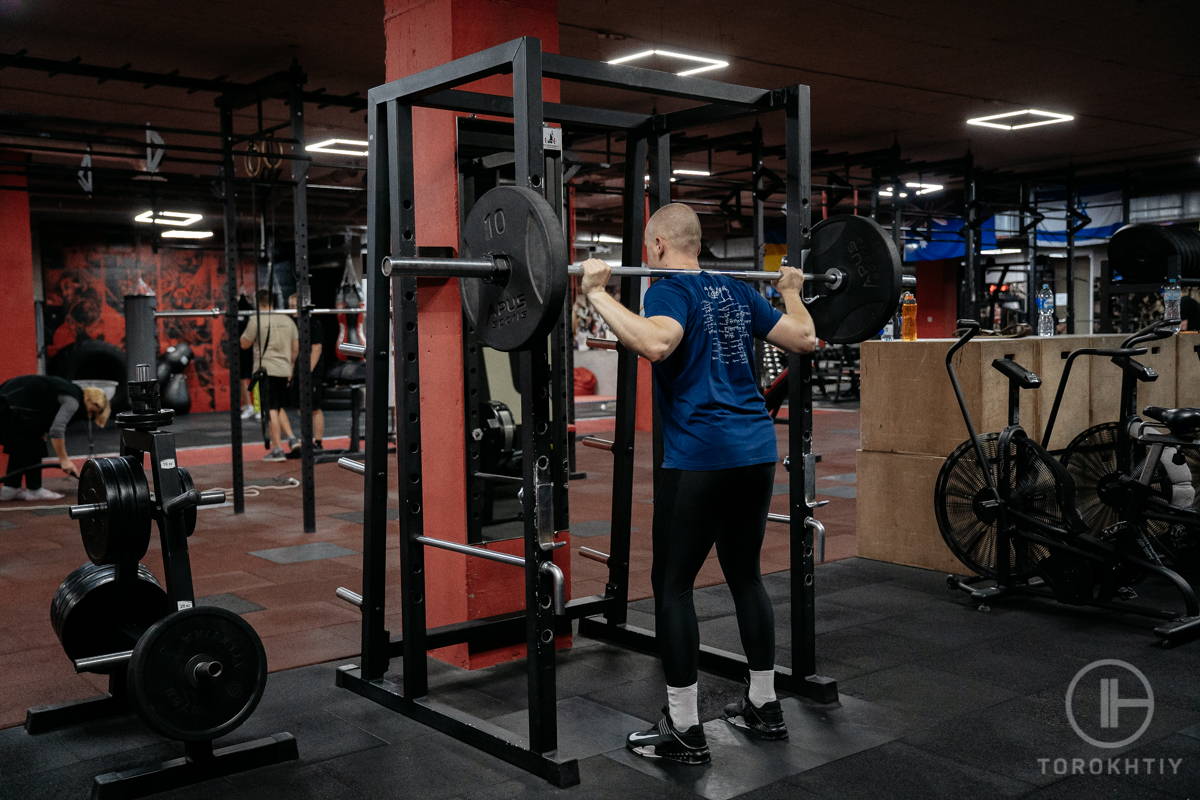
Should You Get a Power Rack?
There are some people that would genuinely benefit from getting a power rack for their home gyms. They include:
- Gym owners – if you own a small commercial gym, then having a power rack is a must. It will enable people who come to your gym to work out safely, and it’s a great piece of equipment for both beginners and more advanced lifters.
- Powerlifters – if you’re a powerlifter that wants to have a small training space at home, then a power rack is a must-have equipment. It will allow you to train vital exercises such as the bench press and squat.
- Owners of fitness boxes – if you have a fitness box, a power rack can be a great piece of equipment to have for when you are doing more strength-focused training sessions.
Our Power Rack Recommendations
Now that we’ve talked all about what power racks are and what their key features are let me recommend you some power racks that are worth your investment.
1. Titan Fitness T-3 Series Power Rack
This is a great “value for money” power rack that comes in two different heights (82 inches and 91 inches) and in two different rack depths (24 inches and 36 inches). Along with that, you have the option to choose whether you want it to have weight plate holders or not. Depending on which options you pick, the rack can be worth anywhere from $489 to $649. Additionally, it has all the safety features you need and accessories such as adjustable lever arms, roller j-hooks, and pin safeties.
2. Rogue Fitness RML-390F Flat Foot Monster Lite Rack
This power rack from Rogue Fitness is truly one of a kind. It’s available as a stand-alone rack and doesn’t have to be bolted to the ground before us. It has a substantial 30” depth, and you can choose to additionally get either fat or skinny pull-up bar with a pair of Monster Lite J-Cups and a pin or pipe safety system. This rack is very durable, made out of gauge steel, and extremely durable, so if you choose to invest your money, it will definitely last you a long time.
What is a Squat Rack?
The squat rack is a particular kind of fitness equipment, usually used to hold on to barbells so that you can do exercises such as bench press, overhead press, and squats. In its most basic form, it has only two vertical posts connected with a horizontal one for more stability. Most squat racks have either removable J-hooks to hold the barbell or come with such attached.
Key Features of a Squat Rack
Every squat rack, regardless of its price point, has to have these few key features, which are what will make it useful for you in your home gym. They include:
- Two vertical beams, which should be adjustable in height so that they can fit you and all your family members.
- Sometimes, squat racks have only these two beams, but more high-quality ones also have a horizontal beam that makes them more stable and forms a solid formation.
- Most of the time, squat racks come with an additional accessory in the form of compatible spotter arms that you can use when doing the bench press.
✅ Squat Rack Pros
Squat racks have several essential benefits that must be noted and that you must be aware of when deciding whether you should get a squat rack or not. They are the following:
- It’s lightweight and can easily be moved. If you need to change up the layout of your home gym frequently, a squat rack is a perfect piece of equipment for that purpose. It’s easily portable, and you can move it around as much as you need to until you find the best spot for it.
- It doesn’t take up a ton of space. Squat racks don’t take up that much space, so they’re great to use if you have a tighter training space and you need all the floor space you can get.
- It’s relatively cheap, especially when you compare it to similar types of equipment, such as a power rack. That’s what makes it great for your home gym, as you won’t have to break the bank for it.
❌ Squat Rack Cons
Even though squat racks can be terrific for some of you, there are certain flaws associated with them that you can either accept or simply decide that you cannot deal with. They include:
- Not having enough storage space. Squat racks don’t typically come with a ton of space where you can place your weight plates, and so that will mean you have to buy another piece of equipment if you want to keep everything in order.
- You have to be more careful when racking the barbell. Squat racks are usually more unstable, and if you’re loading a ton of weight, you need to pay special attention and makes sure you don’t go over the J-hooks and hurt yourself.
- It has no safety measures, so you cannot put the barbell in place in case you fail to make a lift. If you feel like you might not be able to lift a particular weight, you either have to not do the exercise, or you have to be prepared to throw the barbell behind you in case you cannot manage to make the lift. This might cause damage to your floors, and additionally, you might injure yourself.
- Squat racks are not as stable, especially ones that don’t have a horizontal beam that joins them together. That might lead to it feeling unstable whenever you’re racking and reracking a barbell.
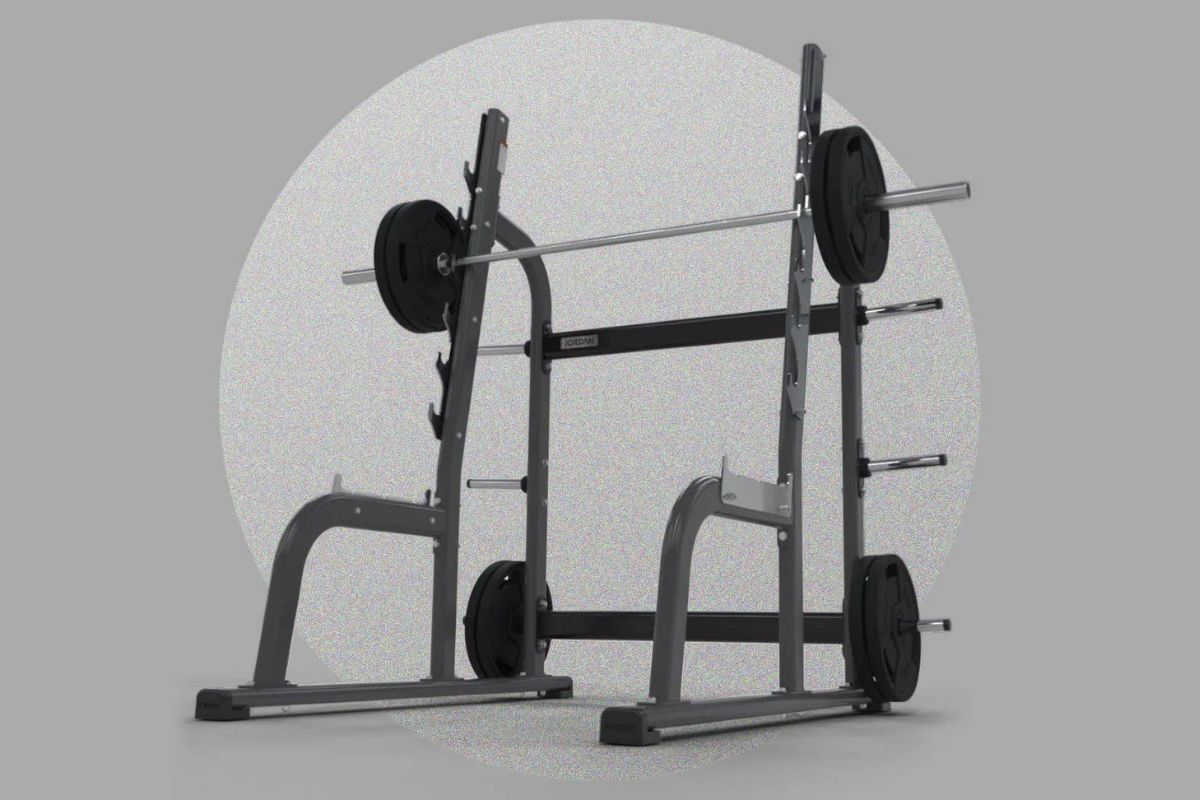
Who Is a Squat Rack Suitable For?
There are some of you who might benefit from getting a squat rack far more than others. For me, those are:
- Aspiring home gym owners – people who want to have a small space where they can do training sessions at home will largely benefit from getting a squat rack. That’s because it’s not expensive, it doesn’t take up a lot of space, and it’s versatile.
- Owners of fitness Boxes – fitting all the needed equipment into a fitness box is not an easy endeavor. And if you lack the space and you do strength sessions rarely, then a squat rack might be worth investing in.
- People who have personal training studios. If you’re a PT and you need to have a ton of equipment that fits into a small space, a squat rack is a terrific option for you.
Our Recommended Half Racks
Now that we’ve talked all about squat racks and what their pros & cons are let us recommend you the best squat rack models in our opinion.
1. Rogue Fitness SML-2 Rogue 90” Monster Lite Squad Stand
This squat rack by Rogue Fitness is pretty similar to a power rack. It delivers the same kind of versatility and stability, however, in a much more compact form. It comes with an adjustable fat or skinny pull-up bar and is perfect for all kinds of exercises, including squats, bench press, floor press, and so on. All of these features, along with its more sturdy and stable body, are what makes this squat rack slightly more expensive than the typical ones you might find on the market.
2. Rep Fitness SR-4000 Squat Rack
This is yet another squat rack that offers the same kind of stability, versatility, and utility as a power rack, but in a much more compact version. It’s heavy-duty, has two different heights, which you can order, and it’s made more stable thanks to rear base weight horns and triangular reinforcements at the base of the uprights. It comes with PR-4000 J-cups and the PR-4000 1.25” pull-up bar. It’s built to endure even dynamic gymnastics movements such as kipping pull-ups, and it has a matte black powder coat, which makes it more durable.
Squat Rack vs Power Rack: Detailed Comparison
Now that we’ve discussed both the squat racks and the power racks separately let’s compare them to one another and see what their key differences are.
1. Space
When we compare squat stand vs power rack, we can safely say that the latter takes up a lot more space. Typically, squat racks consist only of two vertical beams (and some may have a horizontal one in-between for added stability). This makes them ideal for tighter spaces, as they can virtually fit anywhere and can easily get moved from one spot to another. On the other hand, power racks have four vertical beams and take up as much space as a cage would (typically around 30 inches of depth).
With that said, if you’re lacking room, the debate power rack vs squat stand is easily solvable, as squat racks tend to be a lot more compact and can easily fit even into extremely small spaces.
2. Versatility
When it comes to versatility, power racks are clearly superior. Not only can you do many different exercises on them, but they’re also more durable and stable, so you don’t have to worry about them breaking down halfway through your pull-up. Typically, you can do everything from squat, bench press, and overhead press to Bulgarian split squats, pull-ups, and weighted dips on power racks. On the other hand, squat racks aren’t that versatile, and even the best models are suitable for only two to three exercises.
3. Stability & Safety
When it comes to safety and stability, yet again power racks are clearly superior. And it’s easy to understand why. Most power racks have four vertical beams that hold them together in a cage-like form, and along with that, they can be bolted to the ground for added stability. And so, regardless of whether you’re lifting very heavy weights or performing pull-ups, the power rack underneath you will remain stable. Power racks also come with safety pins, allowing you to rest the barbell safely in case you’re unable to make the lift.
On the other hand, squat racks typically come only with two vertical beams and tend to be shaky, as they cannot get bolted to the ground. You can feel that, especially if you lift more weight or when doing pull-ups. Along with that, squat racks lack safety pins, and the best thing you can do if you’re unable to lift the weight is to throw it behind you, which can result in floor damage and potential injuries.
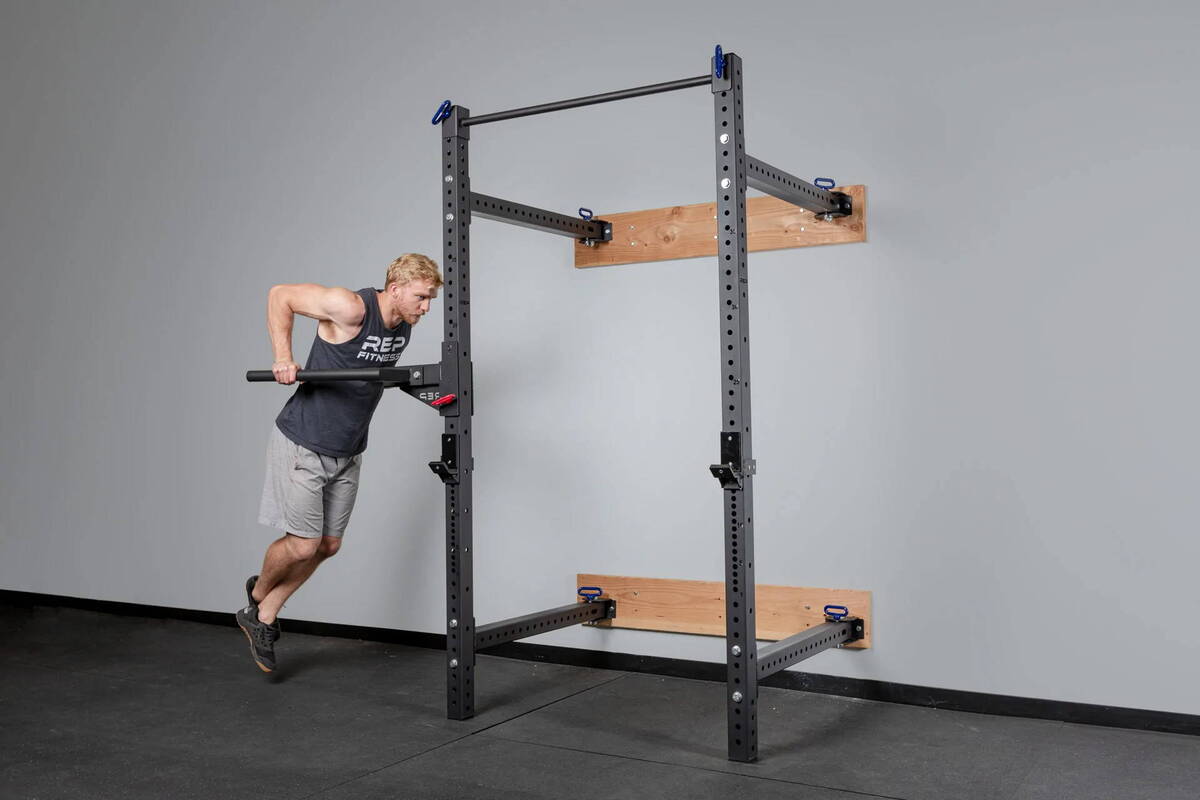
4. Durability & Price
Usually, both squat and power racks are made of steel, which makes them very durable from the get-go. With that said, power racks are usually more expensive, and so the materials they’re made from are of higher quality. On the other hand, squat racks are typically considered a more “budget-friendly” option, so you cannot expect them to be as durable as power racks. However, as both pieces of equipment are made of steel and don’t have any complex mechanism, you can expect them to last at least a couple of years, so durability is definitely not an issue.
If you compare prices – squat rack vs power cage, you will immediately see that power racks are more expensive and that they require more of an investment from your end.
FAQs
Are Power Racks Safer Than Squat Racks?
Comparing power racks to squat racks, when it comes to safety, is like comparing a squat rack vs squat stand. Because they have four vertical beams and safety pins, power racks are safer for all lifters, as they can hold heavier barbells easily, and they enable you to safely let go of the weight in case you can’t lift it.
Can You Do Squats With A Power Rack?
Of course. Power racks are built for squatting, and they’re one of the safest pieces of equipment to squat in, as they have safety pins that allow you to easily let go of any weight in case you’re not able to lift it.
What’s The Difference Between A Power Rack And A Power Cage?
There’s no real difference between the two. They’re just two terms that are used interchangeably to refer to the same piece of fitness equipment.
Can You Deadlift Inside A Power Rack?
In theory, you can. However, the deadlift is an exercise that can be done anywhere, as long as you have a barbell and weight plates.
Can You Bench With A Squat Rack?
Yes, you can. However, in addition to the squat rack, you will also need a bench and a barbell with weight plates.
Conclusion
Both the squat and the power rack are terrific pieces of fitness equipment that can be used for various purposes. With that said, power racks are more suitable for heavy lifters, commercial gyms, or people who have the intention to invest in a true home gym that has plenty of space. On the other hand, squat racks are perfect for those that want to be able to exercise in a limited space and want to make a small portion of their home suitable for workouts. They’re also a terrific option for those of you on a budget who don’t want to spend too much money on equipment that you will only use from time to time at home. Having said all of that, what are your impressions; what’s the better investment – a squat rack or a power rack? Make sure to let us know in the comments.
Also read:
- Best Budget Power Rack
- Best Half Racks for Home Gym
- Best Outdoor Squat Rack
- Best Short Power Rack
- Full Rack vs Half Rack
- Squat Rack Types
- Best Squat Rack
- Best Power Rack With Cable Crossover
- Best Power Rack
References:
- How To Overhead Press: A Beginner’s Guide // BodyBuilding: https://www.bodybuilding.com/content/how-to-overhead-press-a-beginners-guide.html
Why Trust Us?
With over 20 years in Olympic Weightlifting, our team does its best to provide the audience with ultimate support and meet the needs and requirements of advanced athletes and professional lifters, as well as people who strive to open new opportunities and develop their physical capabilities with us.
By trusting the recommendations of our certified experts in coaching, nutrition, dietology, and sports training programming, as well as scientific consultants, and physiotherapists, we provide you with thorough, well-considered, and scientifically proven content. All the information given in the articles concerning workout programming, separate exercises, and athletic performance, in general, is based on verified data. We ensure that you can rely on our professionals’ pieces of advice and recommendations that can be treated as personalized ones which will benefit you and fully meet your needs.
The product testing process is described in more detail here
Author: Ihor Shymechko
Pro Olympic Weightlifter, Coach
Best Results: Snatch – 208 kg,
C&J – 240 kg
Ihor has been a professional weightlifter since 1996, boasting over two decades of competition experience. His notable achievements include clinching the European Championship in 2009 and securing a silver medal in the 105kg division at the Senior World Championships in 2011. Ihor represented his country in the 2008, 2012, and 2016 Summer Olympics. After retiring from competitive weightlifting, he transitioned to coaching, leveraging his vast experience to guide athletes who now compete on both national and international stages.

